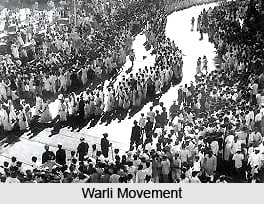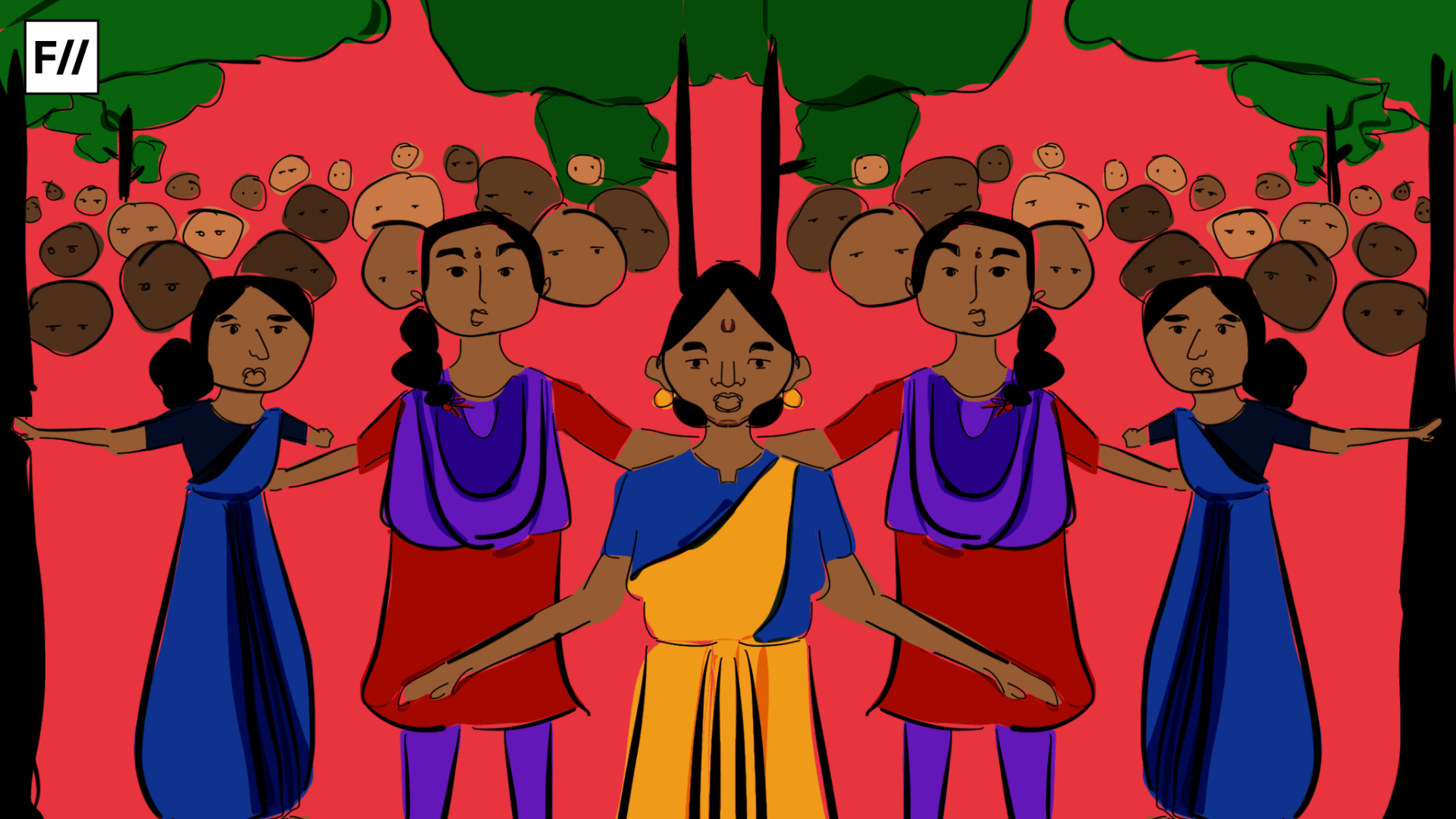While reading any historical document, it is always taken for granted that the men are always either at the forefront of the movement or the ones who assemble the masses to support the agitation. The involvement of women is always overlooked or put under the umbrella category of “man” in literature giving credibility to the myth that women are passive, and it is only the men who can lead movements. In recent times, feminist historians have been critiquing history in an attempt to display an otherwise invisible perspective—the participation of women. This piece focuses on the tribal women of Warli Revolt and their battle against the exploitation they suffered at the hands of the landlord and the lack of recognition along with their exclusion from the movement in the latter stages.

Condition of the Adivasis in Warli
The condition of the tribal people of Warli was horrendous in the 1940s. Most Adivasis had been reduced to the position of tenants or bonded labourers, bonded to the landlord (also the money lender) in someway. The tenants (Kul) of the district were expected to pay to the landlord a rent of approximately half the yield. The tenant had to bear all the expenses for cultivation and in addition, had to pay back to the landlord his Khavti, which was the advance of grain made to him for his sustenance. All small tenants would have no other choice but to take the advances, since their own share of the produce was exhausted by the first quarter of the year.
Failure to pay, allowed the landlords to use their power over the Adivasis to exact forced labour, Veth, for which the Kul were barely paid. The work would involve tending to the landlord’s fields at the critical period of the agricultural season when the rains break. Thus, work on their own rented fields would be postponed and their crops suffer substantial damage. This would force them to resort again to the Khvati.
Many women, too, went into the jungles, but most of them stayed at home with the children and the aged and simultaneously had to bear the brunt of police brutalities.
The Adivasi women had it the worst. In addition to the Veth, the landlords considered them as their own property and used them to please their guests or themselves. They were also on the receiving end of the anger and violence of their husbands. However, in all the accounts, the Adivasi women did not speak up against the abuse they sustained from their husbands, due to the internalization of that form of behaviour. In their eyes, the only abuse they suffered was at the hand of the landlord.

Involvement of the women in the Revolt
The involvement of the tribal women in the Warli revolt was supported by the Kisan Sabha leader, Godaveri Parulekar, also known lovingly as Godutai (elder sister) by the adivasis. Women followed Godutai. Women would speak at meetings about the oppression they faced and would encourage other women to join the struggle.
Read also: The Vaikom Satyagraha: Kerala’s First Anti-Caste Movement
When the police became more vigilant about the struggle and came looking for the men, women would hide them in the house and refuse to tell the police about the whereabouts of their husbands. Women faced the police with no fear whatsoever and would tell the police to take them instead. While the men hid in the forest, the women would take food and water for them in small baskets, covered with dry cowdung so that no one could see what we were carrying.

The women played a very important role in hiding the underground party members. They were careful not to give any information to the police. They would pass a message around that the police was looking for a particular person and the person would be carefully hidden. Many women went into the jungles, but most of them stayed at home with the children and the aged, and simultaneously had to bear the brunt of police brutalities. Many secret meetings would take place in the forest and a lot of women used to attend these meetings.
Warli women displayed great courage in withstanding physical torture, molestations and threats of rape by the police and the landlord’s musclemen during the processions that were carried out by the Kisan Sabha. However, the threats and physical torture did not deter their spirit one bit and they continued to be at the forefront, singing and dancing their way to emancipation.
“Women are seen as a reservoir from which participants can be drawn in order to increase the number and participants of the movement “.
Decline of involvement
So what happens after the movement has concluded?
Women were seen as a reservoir from which participants can be drawn in order to increase the number and participants of the movement. After the passing of the peak period of the movement, the participation of women declines. Men carry on and are thus able to negotiate the reality that will be shaped after the movement. Women fall out and return to the style of life which characterized their existence prior to the struggle.
Also read: Who Were The Women of The Self Respect Movement? | #DalitHistoryMonth
Even though they are now politically more conscious, this falling out from participation of the movement is what ensures that women are unable to break free from their social constraints and continue to be the victim of the oppression they face from society. Even though the economic exploitation and sexual torture they faced at the hand of the landlord got over, they continued to remain victims of domestic abuse and at the mercy of their male counterparts. This is exactly why we need discourses to be more inclusive and led by those who the issue affects the most.
References
- Review of Agrarian Studies
- People’s Democracy
- Indian Net Zone
- Marx’s Concept of Reserve Army
- Tribal Women in the Warli Revolt:1945-1947: ‘Class’ and ‘Gender’ in the Left Perspective
Featured Image Source: Film Freeway
About the author(s)
Rashad is an over enthusiastic football fan who wishes to leave behind a more equal and human world. He also likes to think he's good at dancing.




